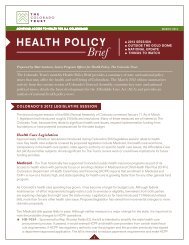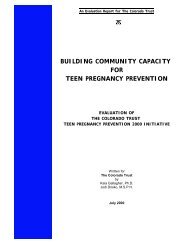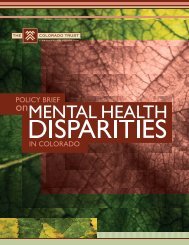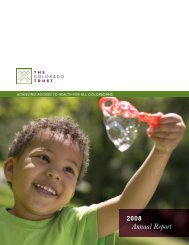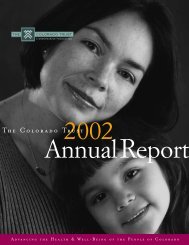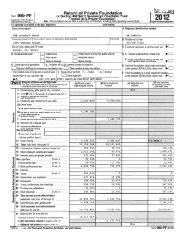After-School Initiative's Toolkit for Evaluating
After-School Initiative's Toolkit for Evaluating
After-School Initiative's Toolkit for Evaluating
You also want an ePaper? Increase the reach of your titles
YUMPU automatically turns print PDFs into web optimized ePapers that Google loves.
Section 2: Program Quality<br />
<strong>Toolkit</strong> questions on program quality were developed to assess youth’s reactions to staff and activities, and to collect program ratings often<br />
associated with best practices in after-school services and general youth programming. The topics included are based on a review of the<br />
literature on positive youth development and successful youth programs 4, 5, 6, 7, 8,<br />
9 and include many of the external assets from Search<br />
Institute’s assets framework 10 . Questions about external assets are directly related to the program and staff rather than parents, family,<br />
school and community, as these are domains over which many programs have little control. The questions included in this portion of the<br />
toolkit are core elements of quality, so they apply to all after-school programs, regardless of the activities provided. All programs are<br />
encouraged to include program quality questions in all surveys administered to youth. Program quality topics are listed in the table below<br />
and the questions used in this question set follow.<br />
Program Quality Topics<br />
Supportive, Caring Climate<br />
(Positive Adult Relationships)<br />
Youth as Partners and<br />
Resources<br />
Safety and Trusting<br />
Environment<br />
Attractive and Meaningful<br />
Activities<br />
• Young person receives support from<br />
non-parent adults<br />
• Staff can be trusted, care about and<br />
respect youth<br />
• Staff is well liked by youth<br />
• Youth feel welcome at program<br />
• Adults recognize when young person<br />
does good things<br />
• Staff encourages young person to do<br />
well<br />
• Youth are given useful roles in<br />
program<br />
• Youth voices are listened to<br />
when planning content and<br />
processes<br />
• Young people have significant<br />
roles in making decisions <strong>for</strong><br />
program<br />
• Youth have significant roles in<br />
doing the activities they decide<br />
to do<br />
• Young people are empowered<br />
to enhance their role as<br />
community resources<br />
• Young person feels safe<br />
• Program has clear rules and<br />
consequences<br />
• Staff sets rules and establishes<br />
clear norms of behavior<br />
• Staff recognizes, values and<br />
responds to diverse<br />
backgrounds and experiences<br />
of youth<br />
• Young person is willing to seek<br />
advice and counsel from staff<br />
• Tailored to interest of youth<br />
• Programs teach “life skills” (measured<br />
in the Life Skills section of the toolkit)<br />
• Youth learn new skills<br />
<strong>Toolkit</strong> <strong>for</strong> <strong>Evaluating</strong> Positive Youth Development 29



